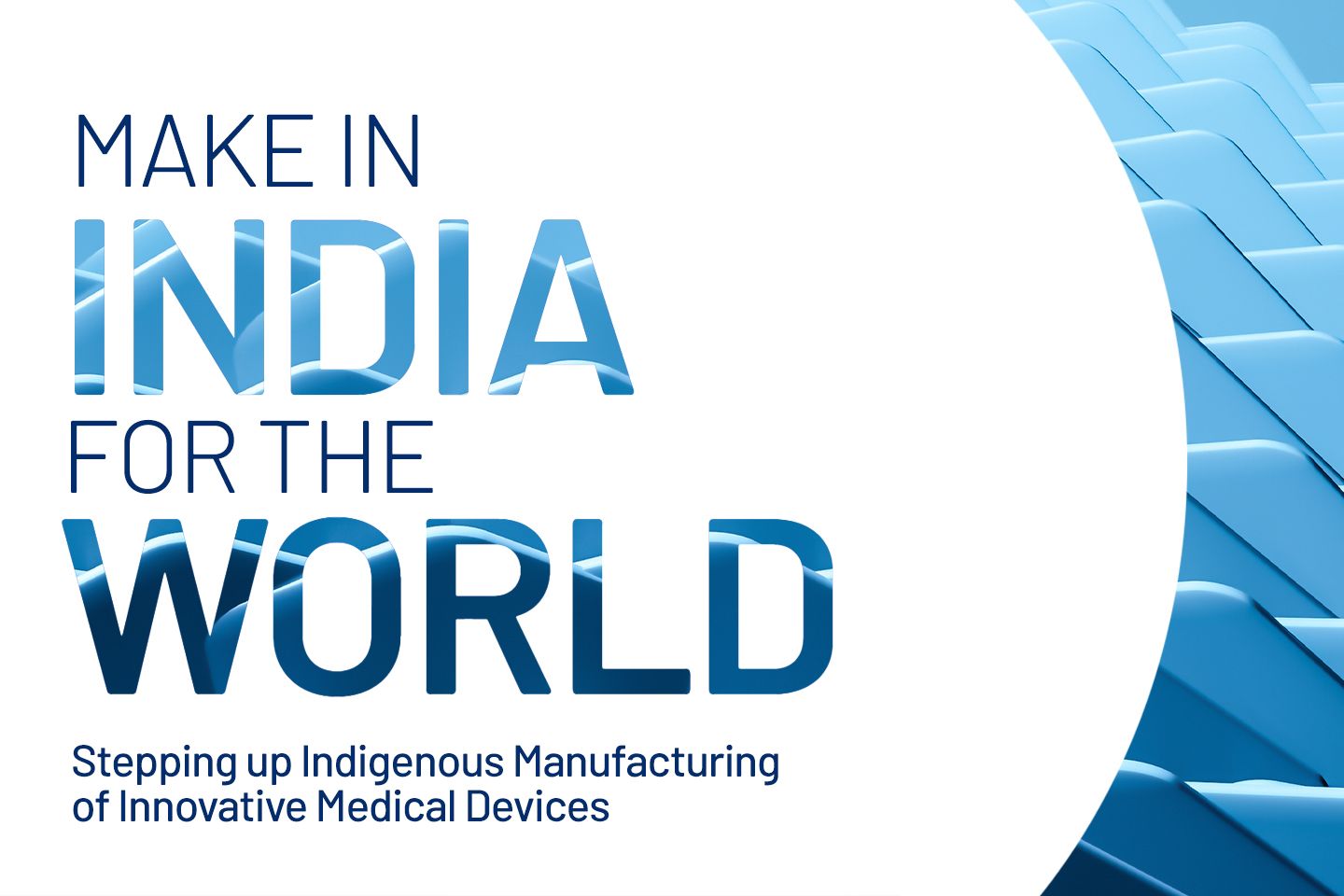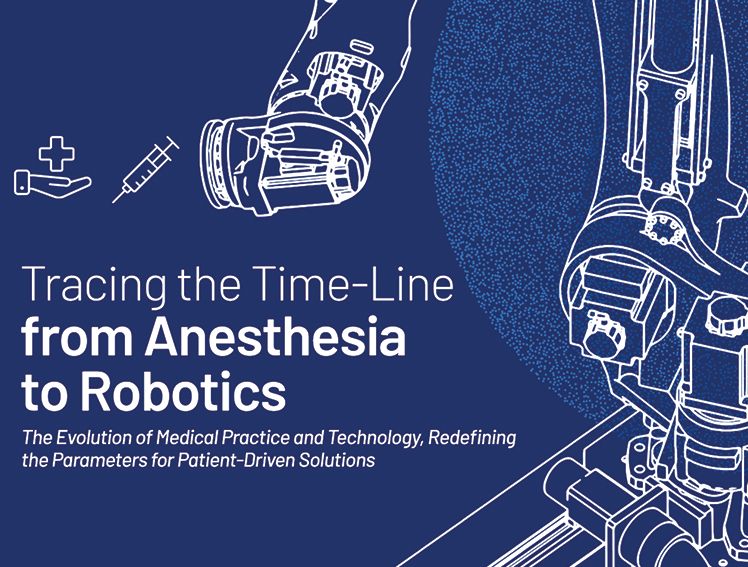
Medical devices have revolutionised modern healthcare, improving the precision and speed with which clinicians can perform disease diagnosis, clinical interventions, and even the real-time monitoring of a patient's progress. However, despite the advancement in medical device technologies at a global scale, there is a prominent disparity in terms of access to medical devices between developed and developing nations.
According to a World Health Organization (WHO) study published in 2006, 95% of the medical devices used in developing countries are imported1. This poses a colossal financial burden on the developing countries and could potentially limit access to lifesaving technology. Although India represents the fourth greatest market for medical devices and equipment in Asia, it has historically had limited capabilities for the domestic manufacturing of these devices1.
In 2022, India imported nearly 80% of its medical devices. The country depends on foreign manufacturers for medical devices, especially for sophisticated machines used in cancer diagnostics and medical imaging2. This problem is further compounded by the lack of medical infrastructure and training that are necessary to utilize cutting-edge medical devices. The WHO estimates that a whopping 70% of medical equipment imported by hospitals in developing countries (from developed nations) fail to function3. Cognizant of these challenges, India has already implemented several measures to reduce dependence on imported devices. The country is working towards establishing a G20 knowledge-sharing forum that aims to leverage cutting-edge technology like artificial intelligence, internet of things, edge devices, and robotics to improve living conditions and address neurodegenerative and age-related heart diseases.4 In tandem, Indian manufacturers are now rising up to the challenge of innovation and scaling-up the production of medical device.
As an Indian company which now has a global footprint spanning over 100 countries, we at Meril Life sciences want to be a compelling example of how local innovation can pave the way for sustained growth. Meril specializes in the creation of medical devices and equipment tailored to the unique demands of the global healthcare landscape, facilitating easier integration and higher cost-benefit performance overall. For instance, Meril is a pioneer in high-quality orthopaedic implants with an optimized sizing matrix that facilitates compatibility with a global population. As a result, Meril's orthopaedic implants are now used in over 50 countries. Meril also manufactures innovative vascular intervention medical devices like structural heart, bioresorbable coronary stents and cardiovascular devices like mechanical heart valves and We can expect more such success stories to emerge in the near future, especially considering the recent legislative changes5 in the country that are facilitating such innovation by domestic medical device manufacturers and accelerating the adoption of advanced medical devices and equipment across the country. The Health Ministry of India has streamlined the regulations around the manufacturing, import, sale, and clinical use of medical devices through the Medical Devices Rules6,7. Another key piece of legislation that is paving the road for greater self-sufficiency for medical devices in India is the Production Linked Incentive (PLI) Scheme8, which aims to improve domestic manufacturing capabilities for high-end medical devices, such as cancer care or radiotherapy medical devices, radiology and imaging medical devices, nuclear imaging devices, anaesthetics and cardio-respiratory medical devices, renal care medical devices, and implants.
Two main benefits to manufacturing medical devices in India are apparent. Firstly, manufacturing devices domestically reduces the overall expenditure of the country's medical system. Secondly, devices and equipment manufactured domestically are more suited for the infrastructure available in the country and, therefore, more likely to be utilized to full capacity9. These benefits are expected to become increasingly significant, given the growing demand for medical devices in the country.
Indeed, through investment in research and innovation, Meril offers cost-effective solutions for life-saving surgical interventions to health professionals in the country, such as absorbable and non-absorbable surgical sutures and tissue sealants. The successful adoption of these products could be taken as a green flag for India to accelerate investment in the MedTech space to herald a new era of reduced dependence on other nations for the import of medical devices.
Along with the increasing ease of engaging in business in the Indian market, domestic manufacturers of medical devices are now stepping up and tackling supply-side barriers. Driven partly by changes in legislation, a large and untapped market and increased emphasis on medical devices-based diagnosis in the country, Indian manufacturers of medical devices are making significant strides.
Through innovative and local initiatives, medical device manufacturers in India, like Meril Life sciences, are addressing some primary unmet clinical needs in the healthcare industry, particularly in terms of accessibility, and helping advance the quality of medical care available in the country. Over the long term, continued support for indigenous medical device and equipment manufacturing will reduce India's dependence on foreign imports and stimulate sustainable growth in the healthcare sector, benefitting all.
References
Medical devices manufacturing industry. (2019, April 13). Economic and Political Weekly
https://www.epw.in/journal/2019/15/special-articles/medical-devices-manufacturing-industry.html
India - Healthcare and medical equipment. (n.d.-b). International Trade Administration | Trade.gov.
https://www.trade.gov/country-commercial-guides/india-healthcare-and-medical-equipment
Malkin, R. (2007). Barriers for medical devices for the developing world. Expert Review of Medical Devices, 4(6), 759–763.
https://doi.org/10.1586/17434440.4.6.759
B20INDIA 2023 Communique. Policy recommendations to the G20. URL:https://api.b20india2023.org/b20docs/Communique%20B20%20Report_Web.pdfAccessed on: 19 Jan 2024
Medical Devices Policy, 2023 – A Vision to Streamline Regulation, Incentivise Domestic Manufacturing and Facilitate R&D
https://corporate.cyrilamarchandblogs.com/2023/06/medical-devices-policy-2023-a-vision-to-streamline-regulation-incentivise-domestic-manufacturing-and-facilitate-rd/
Manu, M., & Anand, G. (2022). A review of medical device regulations in India, comparison with European Union and way-ahead. Perspectives in Clinical Research, 13(1), 3.
https://journals.lww.com/picp/fulltext/2022/13010/a_review_of_medical_device_regulations_in_india,.2.aspx
G20 and Global Medical Device Policies — Assessing Risks and Opportunities.
https://www.scconline.com/blog/post/2023/05/24/g20-and-global-medical-device-policies-assessing-risks-and-opportunities/
Vora, A., Gupta, A., Ojha, A., Pandey, P., Marwaha, M. S., Kadam, S., & Singh, S. (2021). India’s pharma and medical devices strategies: an assessment of the production linked incentive (PLI) scheme.
https://puneinternationalcentre.org/wp-content/uploads/2021/07/Final_Production-Linked-Incentive-PLI-Scheme.pdf
Dr Mansukh Mandaviya focuses on high value pharmaceuticals and high-end medical devices to reduce the import dependency. (n.d.)
https://pib.gov.in/PressReleasePage.aspx?PRID=1901121



